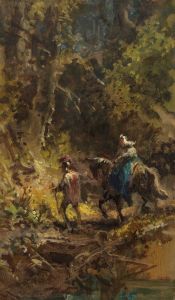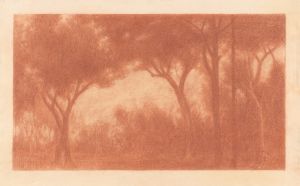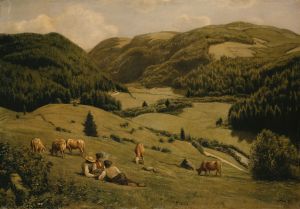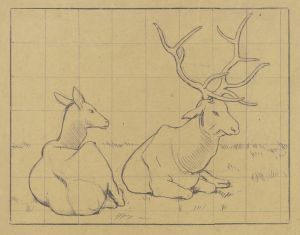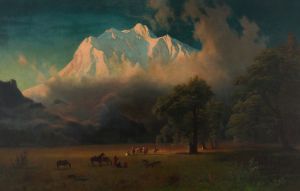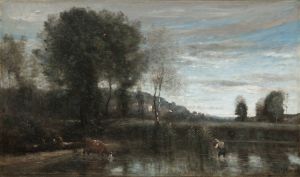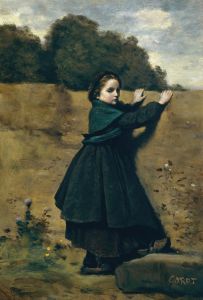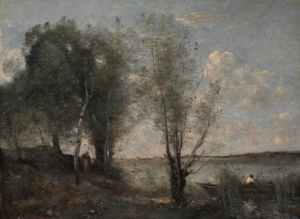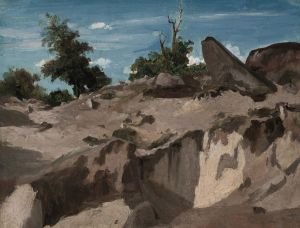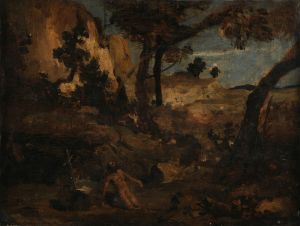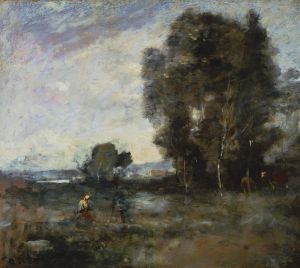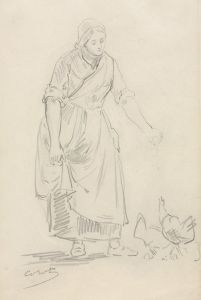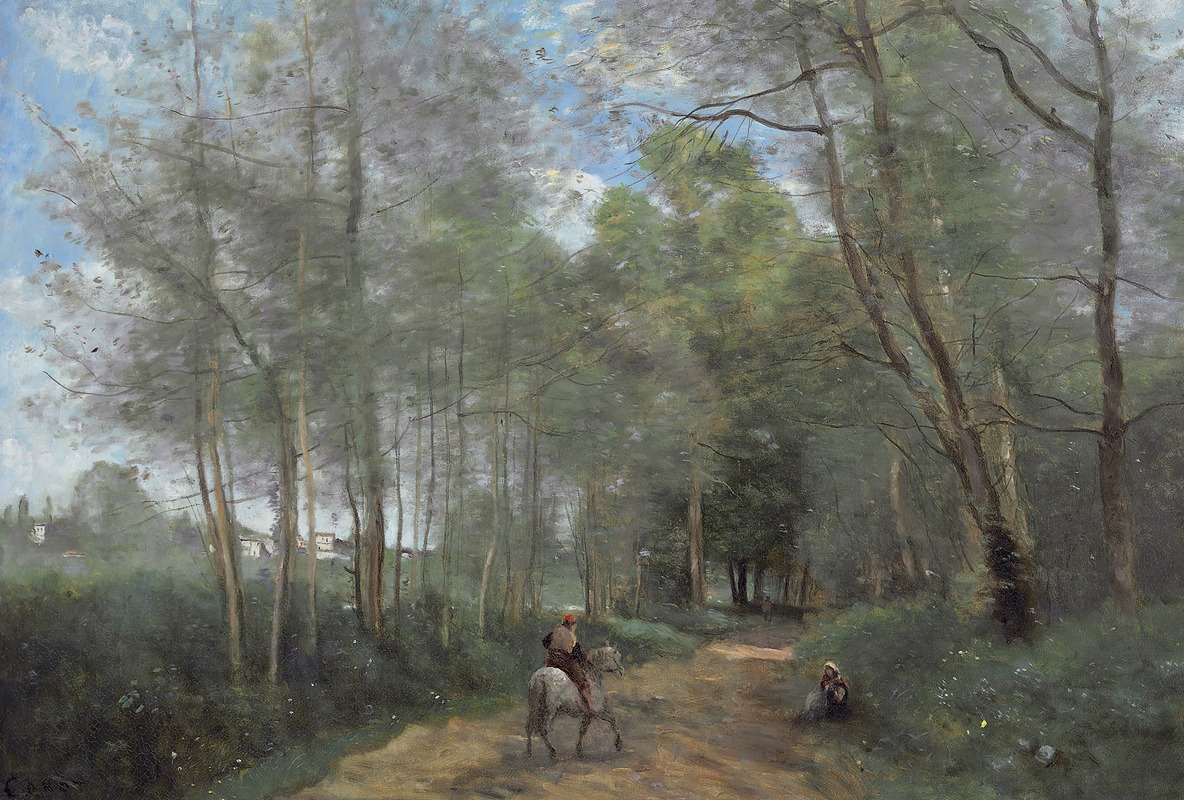
Ville D’avray – Le Cavalier À La Entrée Du Bois
A hand-painted replica of Jean-Baptiste-Camille Corot’s masterpiece Ville D’avray – Le Cavalier À La Entrée Du Bois, meticulously crafted by professional artists to capture the true essence of the original. Each piece is created with museum-quality canvas and rare mineral pigments, carefully painted by experienced artists with delicate brushstrokes and rich, layered colors to perfectly recreate the texture of the original artwork. Unlike machine-printed reproductions, this hand-painted version brings the painting to life, infused with the artist’s emotions and skill in every stroke. Whether for personal collection or home decoration, it instantly elevates the artistic atmosphere of any space.
Jean-Baptiste-Camille Corot was a pivotal figure in landscape painting during the 19th century, known for his contributions to the Barbizon School and his influence on the Impressionist movement. One of his notable works is "Ville D’avray – Le Cavalier À La Entrée Du Bois," which translates to "Ville D’avray – The Horseman at the Entrance of the Woods." This painting exemplifies Corot's mastery in capturing the serene beauty of nature and his ability to infuse his landscapes with a sense of tranquility and poetic atmosphere.
Corot was born in Paris in 1796 and spent much of his career traveling and painting various landscapes across Europe. However, he had a particular fondness for Ville-d'Avray, a small commune near Paris where his family owned a house. This location became a recurring subject in his work, and he painted numerous scenes of its tranquil surroundings. "Ville D’avray – Le Cavalier À La Entrée Du Bois" is one such painting that reflects his deep connection to this area.
The painting depicts a serene scene at the edge of a forest, with a lone horseman entering the woods. Corot's use of light and shadow is particularly notable, as he skillfully captures the dappled sunlight filtering through the trees, creating a harmonious interplay of light and dark. The composition is balanced and carefully structured, with the horseman serving as a focal point that draws the viewer's eye into the depths of the forest.
Corot's technique in this painting is characteristic of his mature style, where he blends realism with a more lyrical and atmospheric approach. His brushwork is delicate and precise, yet there is a softness to the forms that imbues the scene with a dreamlike quality. This ability to convey both the physical reality and the emotional resonance of a landscape is a hallmark of Corot's work and has earned him a lasting place in the history of art.
"Ville D’avray – Le Cavalier À La Entrée Du Bois" also reflects Corot's interest in the relationship between humans and nature. The solitary figure of the horseman suggests a moment of quiet contemplation, as if he is pausing to appreciate the beauty of his surroundings. This theme of introspection and communion with nature is a recurring motif in Corot's oeuvre and resonates with the broader Romantic movement of the time, which emphasized the emotional and spiritual connections between individuals and the natural world.
Throughout his career, Corot's work was celebrated for its technical excellence and its ability to evoke a sense of peace and reflection. His landscapes, including "Ville D’avray – Le Cavalier À La Entrée Du Bois," continue to be admired for their timeless beauty and their capacity to transport viewers to a place of serene contemplation. Corot's influence on subsequent generations of artists, particularly the Impressionists, underscores his importance as a bridge between the classical traditions of landscape painting and the more modern approaches that followed.
In summary, "Ville D’avray – Le Cavalier À La Entrée Du Bois" is a testament to Jean-Baptiste-Camille Corot's skill as a landscape painter and his ability to capture the essence of a place with both precision and poetry. The painting remains a cherished example of his work and a reflection of his enduring legacy in the world of art.





